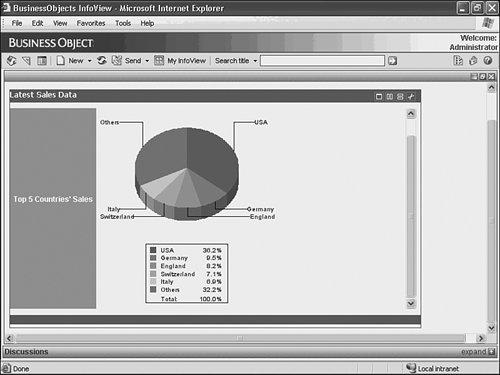Implementing the Part Viewer
| The Part viewer works much the same way as the Page viewerin fact, much of the code is exactly the same, except for the type of viewer object that is created. Listing 33.6 assumes that the report to be displayed has an initial report part defined in the report itself. Listing 33.6. Viewing a Report Using the Report Part Viewer
If a report part is not defined for a report, or if the default part needs to be overridden, Listing 33.7 provides code that can be used to manipulate the ReportParts collection. Figure 33.2 shows the output of this page being displayed in a web browser. Listing 33.7. Specifying Report Part Nodes
Figure 33.2. The Report Part viewer displaying a report part. |
Crystal Reports XI Official Guide
ISBN: 0672329174
EAN: 2147483647
EAN: 2147483647
Year: N/A
Pages: 365
Pages: 365
Authors: Neil Fitzgerald, et al.